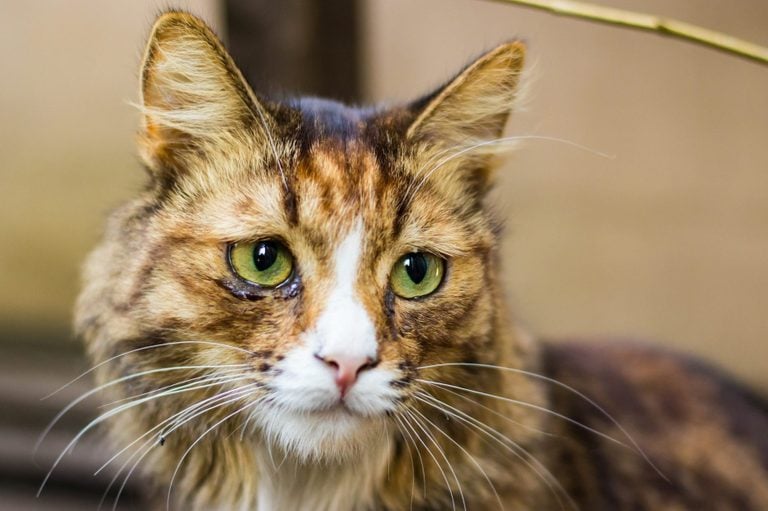Cats, with their enigmatic personalities and graceful demeanor, often leave us captivated by their behavior. One behavior that may puzzle cat owners is the occasional shedding of tears. While it’s not as evident as in humans, cats do, indeed, shed tears. Understanding why cats cry can deepen the bond between feline companions and their human counterparts. In this comprehensive exploration, pet barn ‘ll delve into the various reasons behind feline tears, shedding light on the emotions and health concerns that may prompt a cat to cry
1. Emotional Expressions:
Contrary to popular belief, cats don’t shed tears solely as a physical response to emotion. Instead, their tears are more likely associated with their emotional state. Cats may cry when they feel stressed, anxious, or even joyful. Paying attention to the context in which tears occur can provide insight into your cat’s emotional well-being.
Stressors like changes in the household, the introduction of a new pet, or a move can trigger emotional responses, including tears. Understanding your cat’s body language and behavior during these situations can help you decipher the root cause of their emotional state. It’s crucial to create a secure and stable environment to ensure your cat feels safe and comfortable, reducing the likelihood of stress-induced tears.
Moreover, cats are known for their independence, and subtle changes in their routine or surroundings can impact their emotional equilibrium. Take note of any alterations in their behavior or surroundings and consider how these changes might be affecting your cat’s emotions.
2. Communication Tool:
Cats are skilled communicators, and their tears can serve as a form of non-verbal communication. For instance, if a cat is in pain, discomfort, or distress, tears may be an indicator. Observing other behavioral cues, such as changes in posture, vocalizations, or altered eating habits, can help decipher the message your cat is trying to convey.
It’s essential to pay attention to the duration and frequency of your cat’s tears. If the tears persist or are accompanied by other concerning behaviors, it may be time to consult with a veterinarian to rule out any underlying health issues contributing to your cat’s emotional distress. While emotional communication is vital, addressing potential health concerns is equally crucial in ensuring your cat’s overall well-being.
3. Eye Health Issues:
While emotional factors contribute to feline tears, it’s crucial to consider potential health issues. Excessive tearing could be a sign of an eye infection, injury, or underlying health problem. Cats are susceptible to conditions like conjunctivitis and corneal ulcers, both of which may result in increased tear production.
Regular veterinary check-ups can help identify and address any health concerns affecting your cat’s eyes. In addition, practicing good eye hygiene, such as cleaning around the eyes and monitoring for any signs of irritation, can contribute to your cat’s overall eye health. If you observe redness, swelling, or discharge along with tears, it’s essential to seek prompt veterinary attention to address any potential eye issues.
In some cases, breed-specific factors may contribute to eye health concerns. Breeds with prominent eyes or flat faces, such as Persians and Himalayans, may be more prone to certain eye conditions. Knowing your cat’s breed and its associated health considerations can aid in early detection and preventive care.
4. Environmental Factors:
Environmental factors, such as dust, allergens, or irritants, can also lead to increased tear production in cats. Just like humans, cats may experience sensitivity to their surroundings. Pay attention to any changes in your cat’s environment and consider whether they might be exposed to new allergens or pollutants.
Maintaining a clean and dust-free living space, as well as providing proper ventilation, can help minimize environmental factors that contribute to tearing. Additionally, grooming your cat regularly, including cleaning around the eyes, can prevent the accumulation of debris that may lead to irritation and increased tearing.
Changes in seasons can also impact environmental factors. For example, pollen levels may rise during spring, potentially triggering allergic reactions in sensitive cats. Monitoring your cat’s behavior and tear production during different seasons can provide valuable insights into potential environmental triggers.
5. Breed-Specific Traits:
Certain cat breeds are more predisposed to tear staining than others. Breeds with flat faces, such as Persians and Himalayans, may have a natural tendency to produce more tears due to their facial anatomy. Regular grooming and cleaning around the eyes can help manage tear staining in these breeds.
Understanding the specific traits and needs of your cat’s breed can guide you in providing targeted care. If you have a breed that is prone to tear staining, incorporating a grooming routine into your cat’s care regimen can help keep their eyes clean and reduce tear-related issues.
Moreover, it’s essential to be aware of other breed-specific characteristics that may influence your cat’s overall health. Some breeds may be more prone to dental issues, respiratory problems, or other conditions that can indirectly affect tear production. Regular veterinary check-ups, coupled with breed-specific care practices, can contribute to your cat’s overall health and well-being.
Understanding why cats cry involves considering a combination of emotional, communicative, and health-related factors. Cats, being complex and nuanced creatures, use tears as a form of expression and communication. As responsible cat owners, it’s crucial to pay attention to these subtle cues, providing the love, care, and attention our feline companions need.
If you ever notice excessive or persistent tearing in your cat, consulting with a veterinarian is the best course of action to ensure their overall health and well-being. By being attuned to your cat’s emotions, maintaining a healthy environment, and addressing potential health concerns, you can foster a stronger bond with your feline friend and contribute to their long-term well-being.
In conclusion, understanding the multifaceted nature of feline tears allows us to better care for our beloved cats. Through a holistic approach that considers emotional, communicative, and health aspects, we can create a nurturing environment that promotes their happiness and ensures a thriving companionship.

